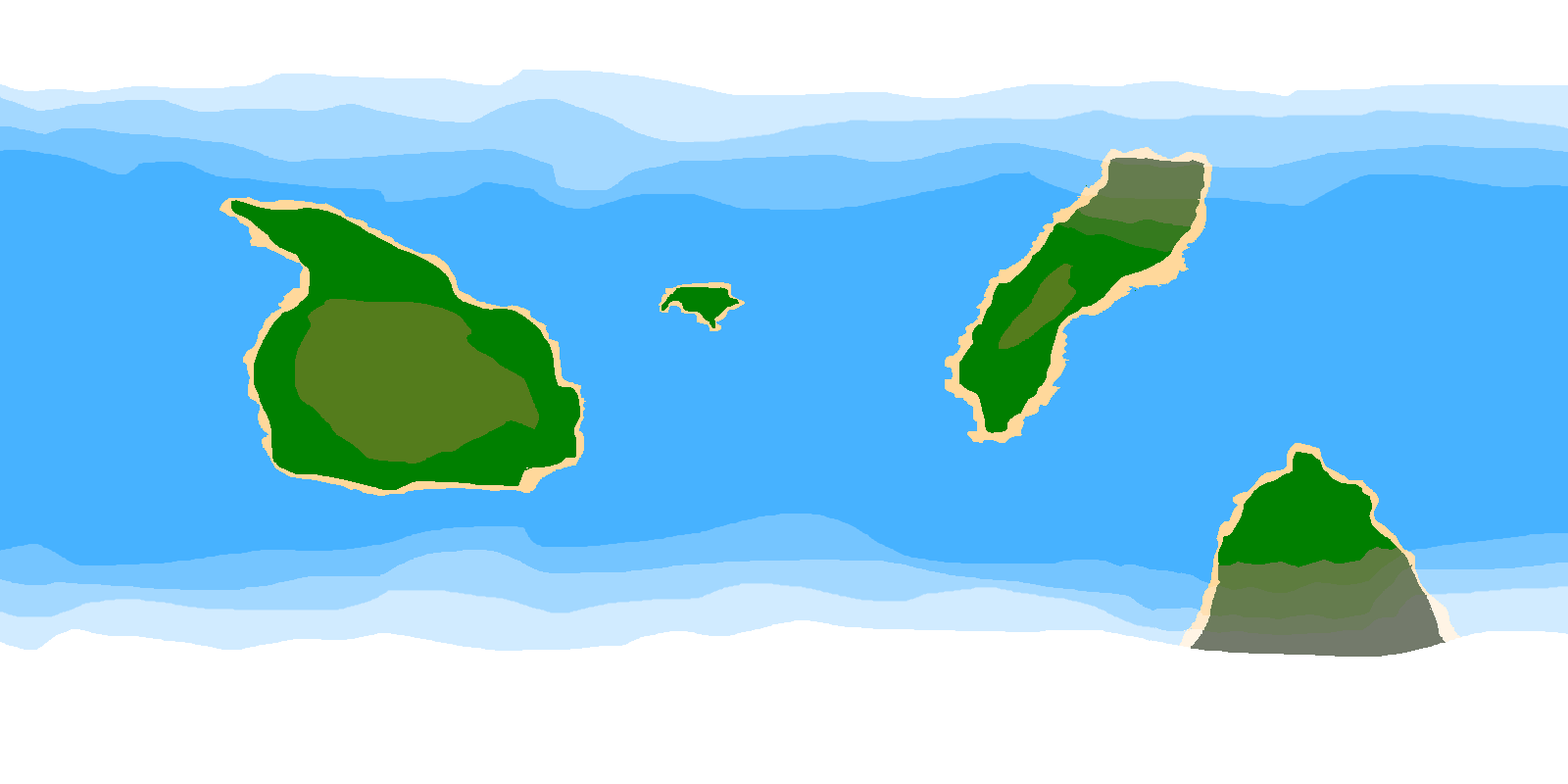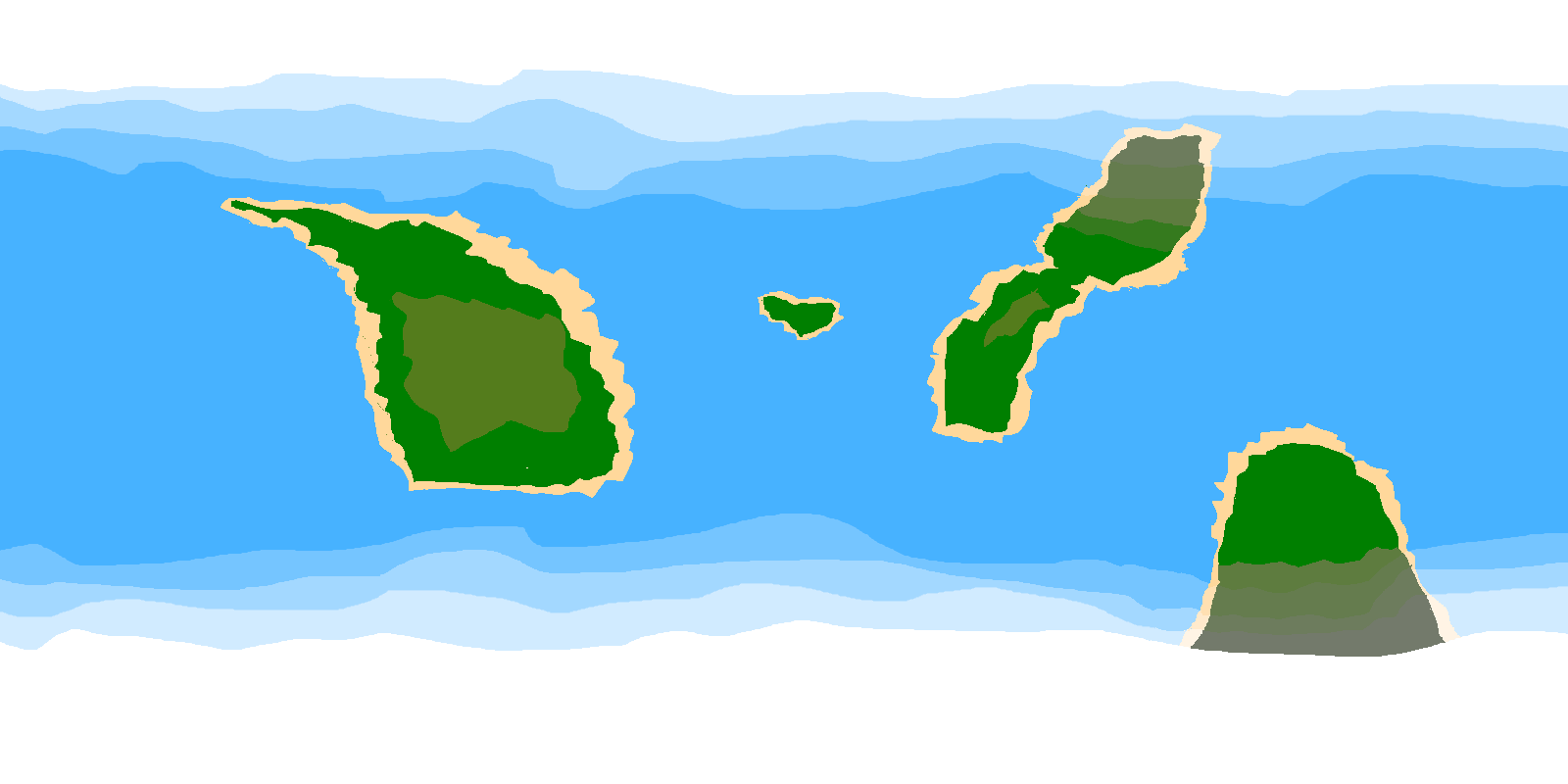System Info
Star: K8V, 0.52 Msol, Hhyyrylainen’s star
Planet 1: 0.1 M earth, 0.07 AU
Planet 2: 1.5 M earth, 0.22 AU
Planet 3: 1.3 M earth, 0.37 AU (almost outside the habitable zone, very cold)
Planet 4: 2.3 M earth, 0.67 AU
Planet 5: 3.2 M jupiter, 2.47 AU
Lore
So, there was no asteroid on that fateful day 66 million years ago. It just missed or something. So now, the Troodons are a spacefaring civilization that spanned an empire of 7.3 MILLION square lightyears, or a cube of 123 ×251 ×239 lightyears. On one of the systems they contolled, they decided to take some shrimp fromn their homeworld, put them into this new system, and see what happens. Specifically, they put it on the habitable planet’s moon, named Quaranitor B, 7.4 moon masses, after the planet it orbits, itself named after a god in Troodon mythology. There were also some snails, brine shrimp (don’t worry it’s not cannibalism, brine shrimp are not shrimp), some morse-code tetras, some dwarf gobies, and a LOT of plants, algae, fungi, and bacteria.
Pioneer Species
(The map is bad, I know.)
In the salty oceans, we have a bunch of banded coral shrimp and some krill. Some freshwater shrimp, like amano and cherry shrimp, dominate lakes and rivers. The coasts are filled with brown shrimp and prawns, which are not really shrimp but they count. The depths are fillled with heterocarpids, a species cut out for these environments.
Alright, I need a better map.
I am by no means an artist, and you can see. I hope someone else, with better art skills than me, will join this project so I can write it. In the meantime, you’ll just have to put up with my awful maps. Anyways, continue on.
Early Diversity
Immediately, biodiversity is at a height never seen on this moon. In the lakes and rivers, amano and cherry shrimp evolve into herbivores, brine shrimp-eaters, scavengers, etc, in just 25000 years. In the oceans, many new species emerge, most notably, the Macrocaris. Keep an eye on this crustacean, as it will give rise to the largst species ever known on the moon. It may be only 20% larger than normal shrimp, but it is an evolutionary giant. More species that are not crustaceans have been diversifying, too! The dwarf gobies have evolved into saltwater and freshwater variants, and the tetras have become 4 cm long herbivores! Snails are also evolving, as some have evolved to eat the brine shrimp corpses that pollute the seafloor.
Noticable Difference
After 5 million years, things are REALLY ramping up. The Macrocarid species has evolved into 10 cm long forms. There are the ones that feed on small krill, dubbed the shrimpwhales. The ones that feed on smaller shrimp are dubbed shrimpsharks, and they sometimes kill shrimpwhales! And some macrocarids have evolved to be able to go onto land for longer periods, sometimes, if they’re lucky, a full 24 hours! These forms are called gicarids, or “land shrimp.” Many freshwater species have been evolving, like the cherry shrimp in lakes becoming almost 7 cm! 3 inch long Amano shrimp feed on the brine shrimp, and are dubbed “megamanos.” The cherry shrimp have split into many forms! The scavengers, the tomacarids, for “corpse shrimp,” are around 2 inches long, and feed on the shrimp that did not make it. 3-inch long caridarctiton, or “shrimpy predators,” are like freshwater shrimpshark knockoffs. There are also the algae eaters, which are 3.8 inches, though not as big as the shrimpwhales, with their length of 6 inches. Some coastal shrimp and snails have been getting bigger too! The grasshopper shrimp can “jump” 15 inches! The coastal snails have split into two forms: the grazegaries, which, well, graze, and the lionsnails, which eat baby grazegaries! They are 5 cm and 7 cm long respectively. Anyways, this is getting too long, I’ll just stop here.

